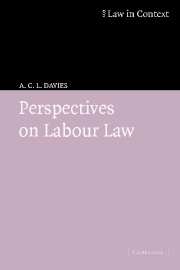What next?
Published online by Cambridge University Press: 06 January 2010
Summary
This postscript is not intended to draw any conclusions from our discussions. The purpose of this book has been to present you with a variety of – often conflicting -perspectives on labour law, and to leave you to draw your own conclusions about which arguments you find most persuasive. Instead, this postscript looks towards the future. Labour law is in a constant state of flux. Sometimes policy-makers may be more heavily influenced by rights arguments; sometimes they may act on economic imperatives. And as we saw in chapter 4, labour law is regulated in many different layers: international, regional and domestic. So the competing arguments may carry different weight at these various levels, leading to conflicts between them. How is labour law likely to develop in the next few years?
The economic and social context
At many points in this book, we have referred to the process of globalisation. Multinational enterprises are able to locate their management, research and production activities virtually anywhere in the world. Cost is a major factor in their decisions. The fear is that a state like the UK will seem unattractive because of its high labour costs, and that this will lead to substantial job losses. National governments will lose control over labour law because they are beholden to the multinationals. Many fear that this will lead to a ‘race to the bottom’ as governments seek to reduce their labour standards to the lowest possible level. What is the future of globalisation?
- Type
- Chapter
- Information
- Perspectives on Labour Law , pp. 238 - 246Publisher: Cambridge University PressPrint publication year: 2004

